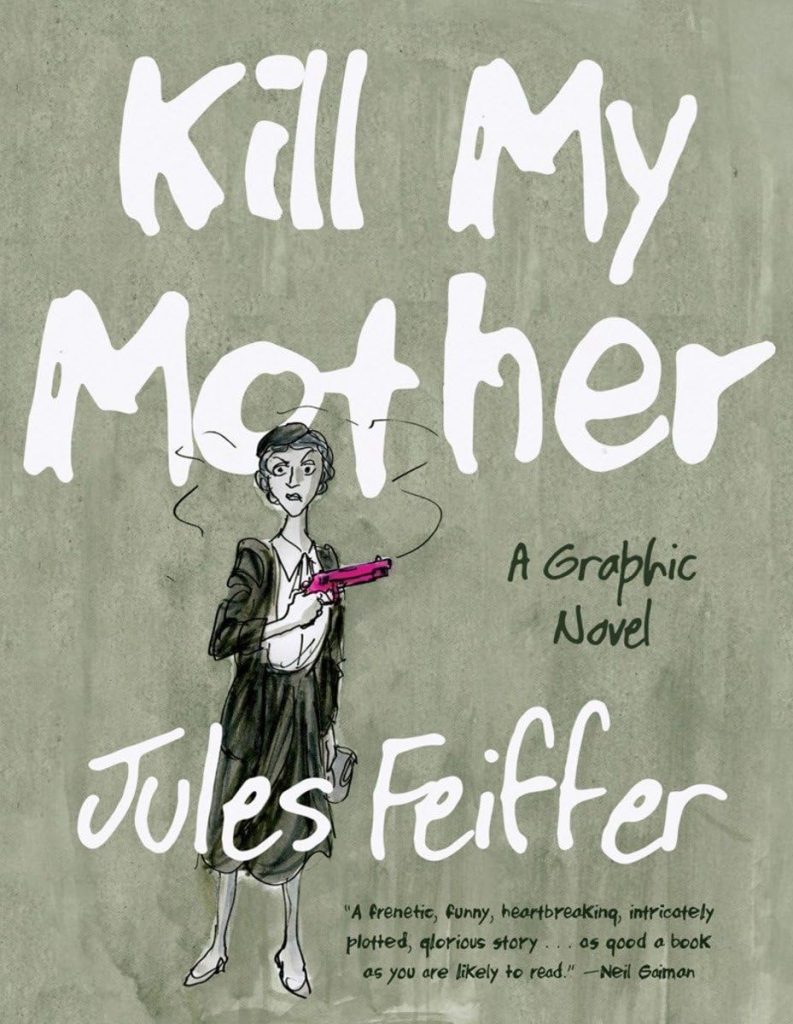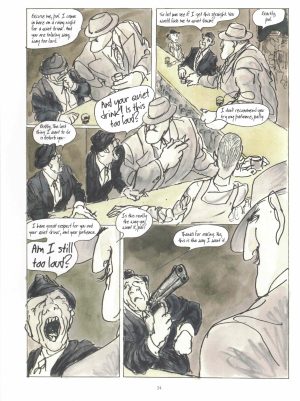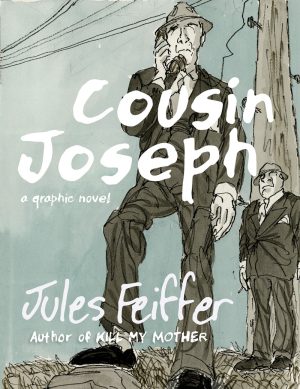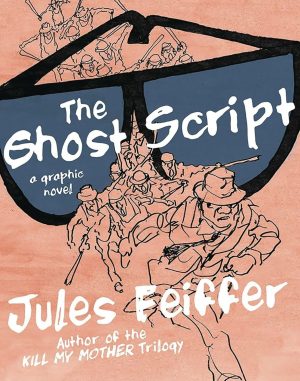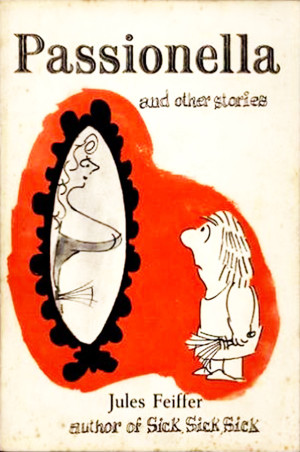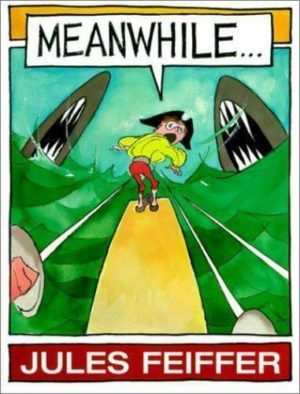Review by Colin Credle
Award winning author, illustrator and cartoonist Jules Feiffer has collected many accolades, including a Pulitzer Prize in 1986 for editorial cartooning. Kill My Mother is his homage to film noir and Hollywood of the 1940s. Feiffer’s work as a cartoonist comes through with witty dialogue and humorous gags reminiscent of the era, while his distinctive illustration is energetic, if not abstract in places. The scribbles reveal a process, but are presented with effect and, as a final panel, work well.
The characters are more caricatures of the film noir genre than distinct personages. We have the drunk apathetic private investigator, the unappreciated cute female assistant who does all the work, the meaty bruiser with a fedora, tall mysterious blondes, failed boxers and the seedy underbelly of a corrupt, venal and glamorous Hollywood.
Private Investigator Neil Hammond hired Elsie as an assistant after her husband, a former cop, was mysteriously murdered. Elsie hopes Hammond will help solve the case in his spare time, but Hammond prefers to down bottles of Bourbon at a regular pace. Annie is Elsie’s daughter and possesses an inexplicable malevolent antipathy towards her mom and also bullies and orders around Artie, the boy next door, which becomes significant later when they are adults. Initially, we follow Annie and Artie’s exploits as well as Elsie’s travails at work with the drunk, unpleasant Hammond. Enter the dame. The plot takes off when a mysterious tall blonde woman hires Hammond to locate an equally tall attractive blonde woman who has disappeared.
What follows is a mixture of hi-jinks and a collection of gags, as well as a good dose of manipulation and foul play. The noir genre defines itself with witty banter, tortured souls with a dubious moral compass and a cast of characters with murky intentions. Feiffer hues closely to this line with humour as well as some overwrought psychological drama.
World War II is in full mode and the USO organizes a trip to the Pacific Front, where all the major characters congregate amidst the mayhem of bullets and the fog of war. Although this is a homage to noir, the intermittent whimsy peppered with sudden emotional revelations and gnashing of the teeth dissipate the gravity associated with the genre. Most of the men behave poorly but in a whiny pathetic way deserving of derision. The women do all the heavy lifting and succeed despite the incompetence of the men surrounding them and absent of any satisfaction. By the end there is plenty of complaining and emotional explaining. It’s not clear if these sudden revelations are part of the gag, part of the mystery or maybe simply in service of the story. To enjoy the madcap events, it’s probably best to forego any commentary and assume it’s all just zany whimsy – hot diggety dog, it’s on the beam.
There’s a continuation in Cousin Joseph.
